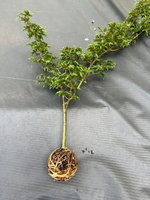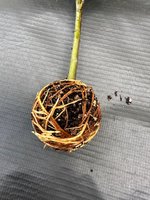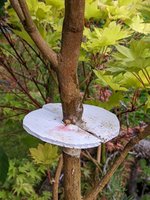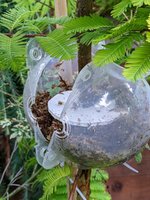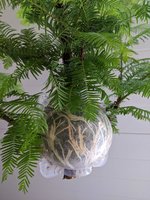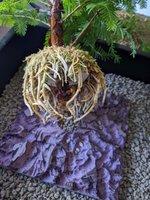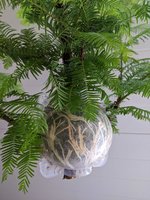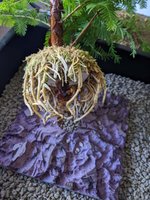Clip
Seedling
I decided to try some of the black plastic layering balls and got two sizes back at the beginning of the year. I tried them on two different JMs, zelkova, Jap camellia, Kingsville boxwood, and a chirimen cypress. JMs and zelkova did well. The camellia branches were more horizontal than vertical and one rooted in the lower half and the other did not root. The ball dropped down some on the cypress and I only had root growth below the cut. Based on that I think it would have rooted if the ball had remained higher and kept the top damp. The boxwood rooted ok, but not as strongly as I had hoped. Pics are from the one off of the shishigashira that always roots strongly based on my experience. Zelkova root balls were also very strong. I tried long fiber SM and a potting soil mix. Of the two the potting soil mix was better. The moss got too wet. I think these work well if they are roughly vertical and water can be added periodically. For horizontal branches I get better results with the damp moss and sealed/.wrapped enclosure. Overall I am happy with the results and will use these again next year.

